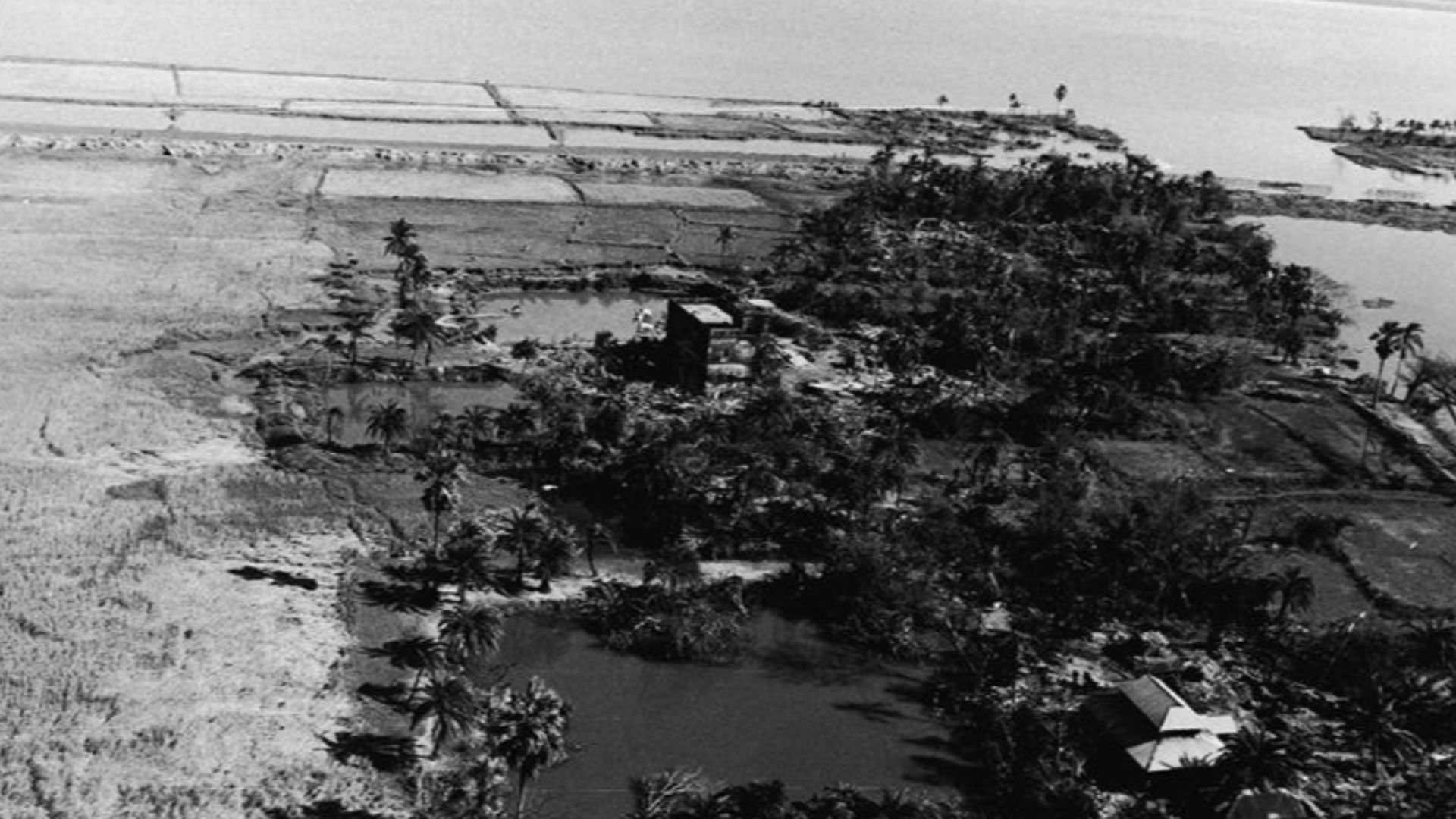Unexpected Forces Behind Great Events
Major happenings throughout history were not always by design, but by something far less predictable: the weather. Weather might just seem like an inconvenience, but climate calamities have changed history and left lasting marks on human destiny. In this list, we explore a series of 20 powerful events where the force of nature led to unthinkable consequences.
 Christian Wilhelm von Faber du Faur on Wikimedia
Christian Wilhelm von Faber du Faur on Wikimedia
1. Napoleon’s Russian Campaign Halted By Brutal Winter
The Russian winter of 1812 dropped to −30°C, freezing both soldiers and horses in their tracks. Napoleon’s Grand Armée lost over 400,000 troops, and it was largely due to the freezing temperatures and lack of supplies.
2. The Little Ice Age Sparked European Famine And Conflict
Spanning several centuries up to the 19th century, the Little Ice Age led to colder, longer winters and failed harvests. Food shortages contributed to events like the French Revolution and the Thirty Years’ War.
 David Vinckboons / Possibly Adam van Breen on Wikimedia
David Vinckboons / Possibly Adam van Breen on Wikimedia
3. D-Day Delayed By Channel Weather Forecasts
Even though the invasion was originally scheduled for June 5, 1944, it was postponed by one day due to poor weather conditions. A rare break in the storm, accurately predicted by meteorologists, enabled the successful Allied landing.
4. The Spanish Armada Destroyed By North Atlantic Storms
In 1588, fierce storms scattered the Spanish fleet as it circled the British Isles and wrecked many ships. Out of 130 ships, more than 60 were lost, and for most, it was due to weather rather than English cannons.
5. Krakatoa’s Eruption Disrupted Global Weather
The 1883 eruption sent ash 80 km into the atmosphere, and this disrupted global weather patterns. Temperatures dropped worldwide, which led to crop failures and food shortages. The eruption’s sound was heard 3,000 miles away—one of the loudest ever recorded.
 Georges Clerc-Rampal on Wikimedia
Georges Clerc-Rampal on Wikimedia
6. Mongol Invasions Of Japan Thwarted By Kamikaze Typhoons
Two Mongol fleets in 1274 and 1281 were destroyed by powerful typhoons off Japan’s coast. Over 70% of Kublai Khan’s second invasion fleet was lost to the storms. These events influenced Japan’s isolationist policies and military legends.
 Kikuchi Yoosai / (of the reproduction) Tokyo National Museum on Wikimedia
Kikuchi Yoosai / (of the reproduction) Tokyo National Museum on Wikimedia
7. Hurricane Katrina Changed American Urban Policy Forever
2005’s Katrina didn’t just cause $125 billion in damages, but also claimed over 1,800 lives. Levee failures flooded 80% of New Orleans, exposing major infrastructure weaknesses. Some neighborhoods were underwater for weeks, with wildlife like alligators swimming in the streets.
 AP Photo/U.S. Coast Guard, Petty Officer 2nd Class Kyle Niemi on Wikimedia
AP Photo/U.S. Coast Guard, Petty Officer 2nd Class Kyle Niemi on Wikimedia
8. The Great Blizzard Of 1888 Paralyzed The U.S. Northeast
This storm dropped up to 55 inches of snow, with wind gusts over 50 mph across major cities. Over 400 people died, and communication and transportation were brought to a halt. The blizzard led to the construction of New York’s underground subway system.
9. Battle Of Waterloo Turned By Rain And Mud
Heavy rain the night before June 18, 1815, delayed Napoleon’s attack by hours. Muddy terrain slowed down cavalry charges and cannon deployment, and this gave the Allies an edge. Soldiers sank ankle-deep into mud, which made quick maneuvers nearly impossible.
10. Dust Bowl Drought Reshaped U.S. Agriculture And Migration
Severe drought and wind erosion in the 1930s devastated American farmlands. Over 3 million people were displaced, primarily from Oklahoma, Texas, and Kansas. The crisis led to major federal soil conservation programs still in use today.
11. Cold Snap During The Korean War Froze Military Strategy
Winter temperatures in 1950 dropped to −30°C during the Battle of Chosin Reservoir. Thousands of U.S. and Chinese troops died from frostbite and exposure. Also, guns jammed and vehicles failed to start due to the extreme cold.
 Photo by Corporal Peter McDonald, USMC on Wikimedia
Photo by Corporal Peter McDonald, USMC on Wikimedia
12. Weather Aided Washington’s Escape In The Battle Of Long Island
In 1776, George Washington’s army avoided capture thanks to thick fog covering their retreat. The weather concealed 9,000 troops as they crossed the East River undetected. British forces were just a few hundred yards away, but they never saw them leave.
 The Werner Company, Akron, Ohio on Wikimedia
The Werner Company, Akron, Ohio on Wikimedia
13. Mount Tambora’s Eruption Altered Global Climates For Years
This 1815 eruption was the most powerful in recorded history and ejected 160 cubic kilometers of ash. It triggered global temperature drops and led to the infamous “Year Without a Summer.” Snow fell in June in New England, and Germany experienced summer frosts.
 This image was taken by the NASA Expedition 20 crew. on Wikimedia
This image was taken by the NASA Expedition 20 crew. on Wikimedia
14. The Great Galveston Hurricane Wiped Out A Major U.S. Port
In 1900, Galveston, Texas, was struck by a Category 4 hurricane that killed an estimated 8,000 people. The storm demolished roughly 3,600 buildings and effectively ended Galveston’s status as a leading port city.
15. The Great Frost Of 1709 Crippled Europe’s Economy
Temperatures across Europe plummeted, freezing rivers like the Thames and the Seine solid. The frost lasted for nearly three months and not only devastated agriculture but also killed hundreds of thousands.
 Unknown authorUnknown author (French art) on Wikimedia
Unknown authorUnknown author (French art) on Wikimedia
16. Cyclone Bhola Influenced The Birth Of Bangladesh
In 1970, Cyclone Bhola killed an estimated 300,000–500,000 people in East Pakistan (now Bangladesh). This disaster remains the deadliest tropical cyclone in recorded history. It highlighted government negligence and fueled the independence movement that led to the 1971 war.
 Express Newspapers/Getty Images on Wikimedia
Express Newspapers/Getty Images on Wikimedia
17. El Niño Of 1997–98 Triggered Global Economic Shocks
The 1997–98 El Niño caused over $45 billion in damages worldwide. Weather anomalies included floods, droughts, and heat waves across multiple continents. Australia experienced massive wildfires while Peru faced deadly floods. Fish migration patterns were also disrupted, impacting global seafood industries.
 No machine-readable author provided. Alfredobi assumed (based on copyright claims). on Wikimedia
No machine-readable author provided. Alfredobi assumed (based on copyright claims). on Wikimedia
18. Ice Conditions Delayed The Titanic’s Rescue
After hitting an iceberg, the Titanic sank in 1912. Nearby rescue ships were delayed by icefields, and the Carpathia had to zigzag around icebergs, delaying its arrival. The icy waters contributed to the deaths of over 1,500 passengers from hypothermia.
 Unknown authorUnknown author on Wikimedia
Unknown authorUnknown author on Wikimedia
19. Sahara Desert Expansion Fueled Ancient Migrations
Around 5,000 years ago, the Sahara transformed from a lush savanna to an arid desert due to gradual climate shifts. This change forced mass human migrations southward and toward the Nile Valley.
 Luca Galuzzi (Lucag) on Wikimedia
Luca Galuzzi (Lucag) on Wikimedia
20. The 2003 European Heatwave Claimed Over 70,000
Temperatures soared above 40°C for weeks, overwhelming health systems across Europe. France, Italy, and Spain recorded thousands of excess deaths, especially among the elderly. The disaster spurred major heat adaptation policies in the EU.
KEEP ON READING

20 Historical Battles That Shouldn't Have Been Lost
Against All Odds. There are some battles we can’t believe…
By Farva Ivkovic Aug 8, 2025
20 Youngest Monarchs To Take The Throne
Child Rulers. There may be age limitations to becoming a…
By Farva Ivkovic Aug 8, 2025
The 20 Most Influential Writers in History
The Pen is Mightier than the Sword!. History is not…
By Cameron Dick Aug 8, 2025
20 Of America's Greatest Leaders In History
These Americans Could Lead Anyone!. The United States of America…
By Rob Shapiro Aug 8, 2025
20 Notable Historical Figures From Ancient China
Travel to the Past. History is long, intricate, and often…
By Breanna Schnurr Aug 8, 2025
20 Unsung Heroes History Doesn't Talk About Enough
Overlooked but Not Forgotten. History is a mixed bag of…
By Cameron Dick Aug 8, 2025








